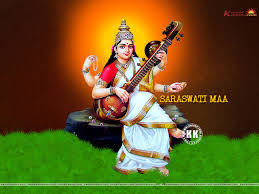VEDANTAM FOR BEGINNERS - 40. SWAMI SIVANANDA.
========================================================================
=========================================================================
Tuesday, November 01, 2022. 07:30.
TAT TVAM ASI = That Thou Art :
The Maha-Vakyas :
Post-40.
=========================================================================
The A Priori Method :
Prakriti, the cause of ignorance, is made up of three Gunas, and carries with her the
reflection of that transcendent Reality, Satchidananda. This Prakriti is divided into two aspects,
called Maya and Avidya. Maya is Suddha-Sattva-Pradhana or that state of Prakriti in which the
principle of Purity or Sattva, predominates over the other two,—Rajas and Tamas. Avidya is
Malina-Sattva or that state of Prakriti in which Sattva is predominated and sullied by the other two.
When that pure Intelligence, Chit, is reflected through Maya or Suddha-Sattva, the reflected
Consciousness is called Isvara. It is one only, and controls Maya. When that Chit is reflected in
Malina-Sattva or Avidya, the reflected Consciousness is called Jiva. Due to the multifarious nature
of Avidya, Jivas are too many, and being individualised and separated from one another, they are
swayed by Avidya or ignorance. And this ignorance leads them to identification with the five
sheaths and the three bodies. Thus, there is activity, pain and suffering for the Jiva.
In the sentence, Tat Tvam Asi, Tat refers to the reflected Consciousness in Maya and Tvam
refers to the reflected Consciousness in Avidya. The word Asi proclaims their unity. It asserts that
one Chit alone, reflected in a twofold way, goes under the names of Isvara and Jiva, when it is
respectively qualified by the Upadhis of Maya and Avidya in its reflected State.
This, in short, is the a priori method of understanding the meaning of the Maha-Vakya, Tat
Tvam Asi, the method arrived at from cause to effect.
The Story Of Virochana :
The foregoing analysis is not enough to convince an aspirant about his real nature and make
him fix his mind in meditation upon the idea ‘Aham Brahma Asmi’—‘I am Brahman.’ More often
than not, men do misunderstand the real significance of the words employed to instruct them in
Brahma Vidya. It will be worthwhile to recollect the story of Virochana.
Once Indra and Virochana approached Prajapati to learn Atma Vidya. They underwent the
rigorous discipline of discipleship for a period of thirty-two years. Thereafter Prajapati addressed
them: “Look at yourselves in a cup of water and then whatever you do not understand about your
Self, come and ask me.”
After doing so they replied: “We see ourselves as we are.”
Prajapati then asked them to adorn themselves with the best of clothes and look again in the
water. They did so, and reported to Prajapati what they beheld of themselves. Hearing that Prajapati
said: “That is the Self, the immortal Self.”
They both went away to their respective abodes fully satisfied about the Vidya they had
received. Prajapati said to Himself: “They both go away without having perceived and without
having known the Truth or the Self, and whoever of these two, whether the Devas or the Asuras,
will follow this doctrine will perish.”
Virochana with a satisfied heart preached among his followers: The self (body) alone is to
be worshipped, and so on. But Indra, before he returned to the Devas, experienced difficulty in
getting convinced about the doctrine that the body is the Self. So he went back to Prajapati and after
a second period of thirty-two years’ discipleship learnt that the dreaming self is the true Self. Being
dissatisfied still, he was told that the self in Sleep is the true Self, finally, after an austerity of one
hundred and one years, he learnt that the real Self is above all individualistic implications.
The above story is not quoted without a purpose. Many aspirants in the spiritual path have
no patience to consider deeply the significance of the words employed to instruct them. As William
Cobbett puts it, words are double-edged weapons. When properly understood, they will help one in
all possible ways. When wrongly understood, they will be detrimental to one’s progress. So, too,
with the words Tat, Tvam and Asi. Their true significance can be well understood only after a long,
detailed and careful consideration.
*****
Next- Vachyartha And Lakshyartha :
To be continued
=======================================================================










.jpg)
Comments